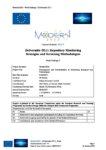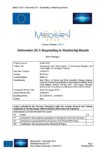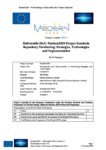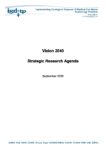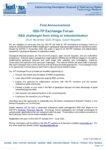Key Topic 6: Monitoring
Overview
Monitoring comprises strategic, governance, methodological and technical aspects of continuous or periodic observations and measurements of environmental (e.g. geological medium including host rock and biosphere), engineering, and radiological parameters. Monitoring helps to evaluate the behaviour of components of the waste disposal system, or of the impacts of the waste disposal system and its operation on the public and the environment, before construction (initial state) and during construction and operations, until the end of institutional control [i]. This research area addresses both operational safety and post-closure safety. It includes regulatory oversight in concert with safety demonstration and assessment of impacts, in accordance with the operating licence.
[i] IAEA (2014). Monitoring and Surveillance of Radioactive Waste Disposal Facilities, IAEA Safety Standards for protecting people and environment, Safety Guide SSG-31.
Objective
The scope of this research area covers the development of:
- Practical monitoring strategies that do not negatively affect post-closure safety, including devices, techniques and methods of data treatment for implementation. This includes monitoring strategies for site characterisation, facility construction and operation, and contribution to the safety assessments.
- Monitoring strategies for current and future requirements for steps leading to closure of the facilities in an operational disposal system. It also considers requirements for monitoring dedicated to the post-closure phase of the geological disposal system and monitoring of progress in relevant scientific and technological areas.
Research with these objectives therefore contributes to the first pillar, “Safely Operate”, of the 2040 Vision.


